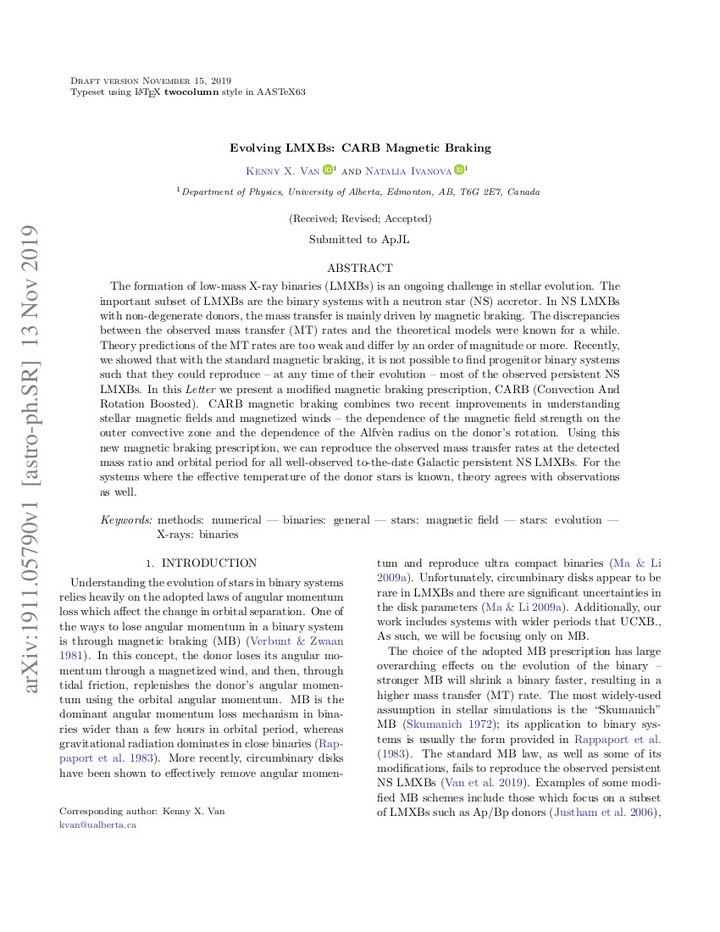
Abstract
The formation of low-mass X-ray binaries (LMXBs) is an ongoing challenge in stellar evolution. One important subset of LMXBs are the binary systems with a neutron star (NS) accretor. In NS LMXBs with non-degenerate donors, the mass transfer is mainly driven by magnetic braking. Discrepancies between the observed and predicted mass transfer (MT) rates have been previously identified. Theoretical predictions of the MT rates are too low, by an order of magnitude or more. Recently, we showed that with standard magnetic braking, it is not possible to find progenitor binary systems such that they could reproduce – at any time of their evolution – most of the observed persistent NS LMXBs. In this Letter we present a modified magnetic braking prescription, CARB (Convection And Rotation Boosted). CARB magnetic braking combines two recent improvements in understanding stellar magnetic fields and magnetized winds – the dependence of the magnetic field strength on the outer convective zone, and the dependence of the Alfven radius on the donor’s rotation. Using this new magnetic braking prescription, we can reproduce the observed mass transfer rates at the detected mass ratio and orbital period for all Galactic persistent NS LMXBs with detailed information on donors. For the systems where the effective temperature of the donor star is known, ARB theory agrees with observations as well.